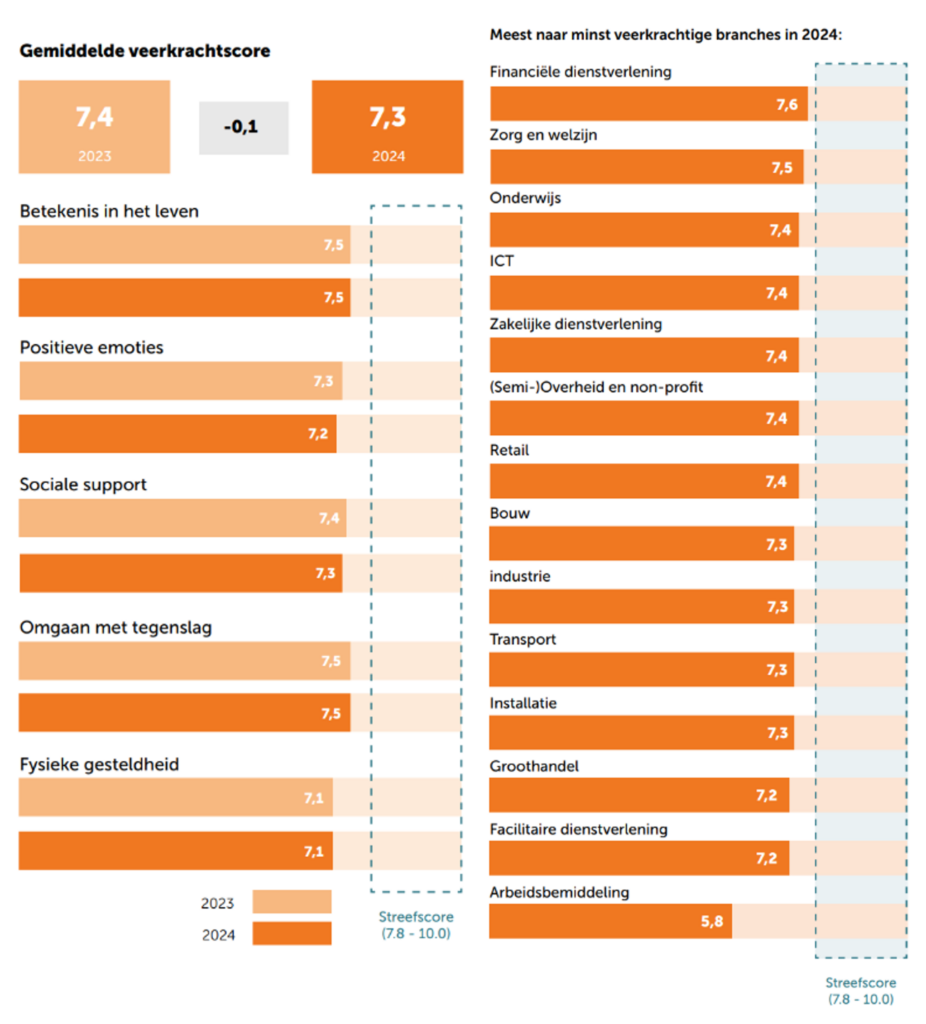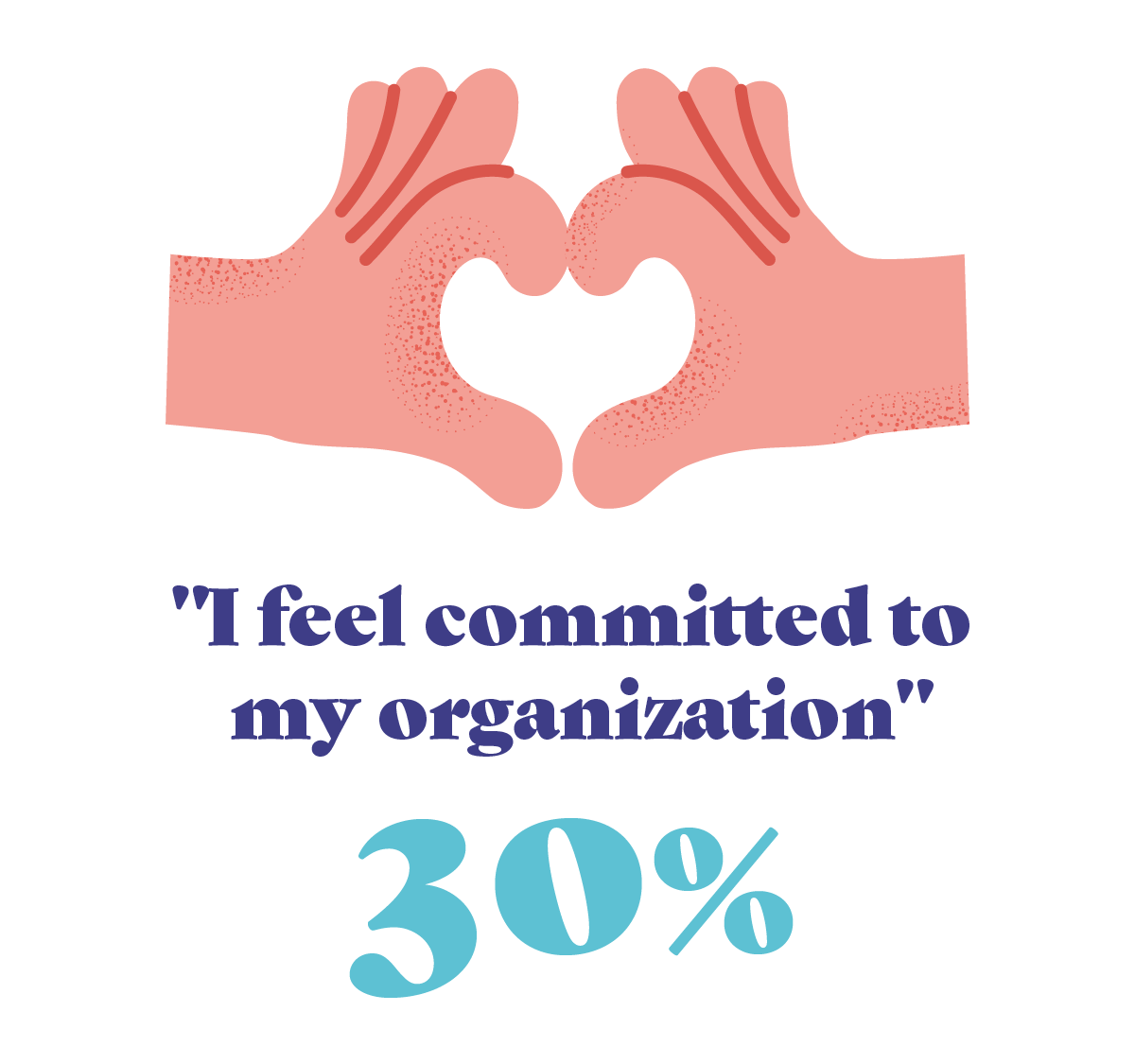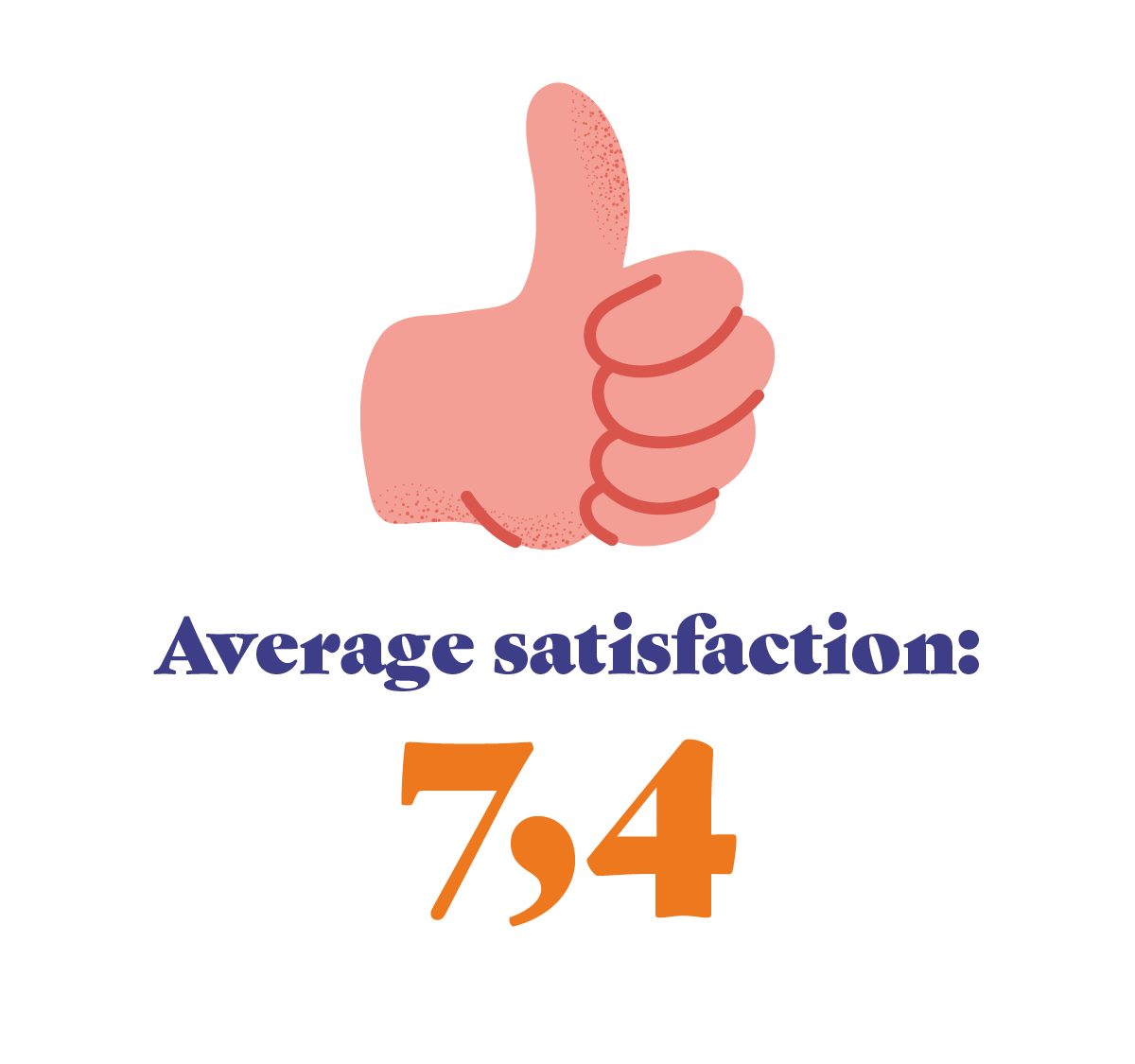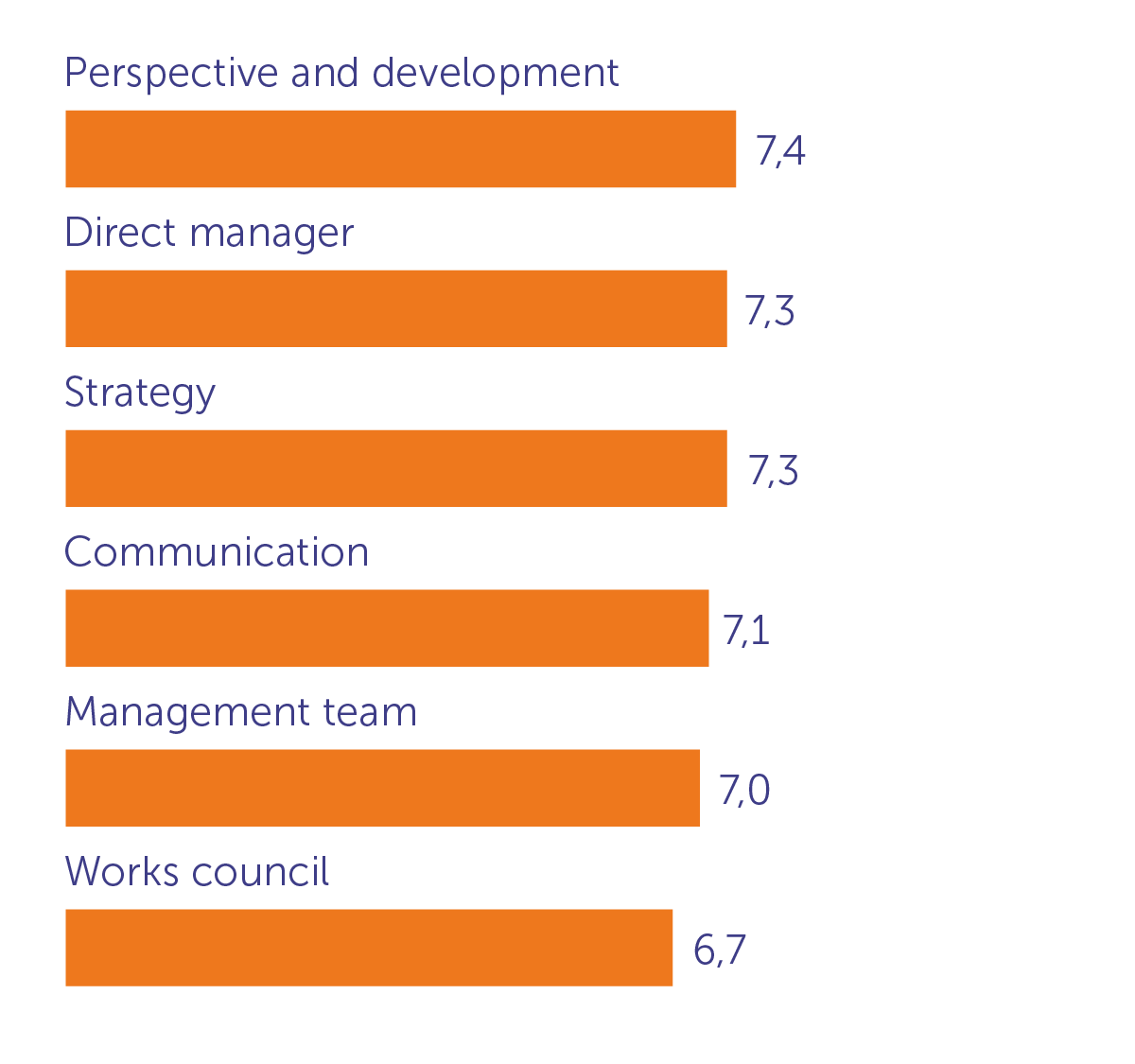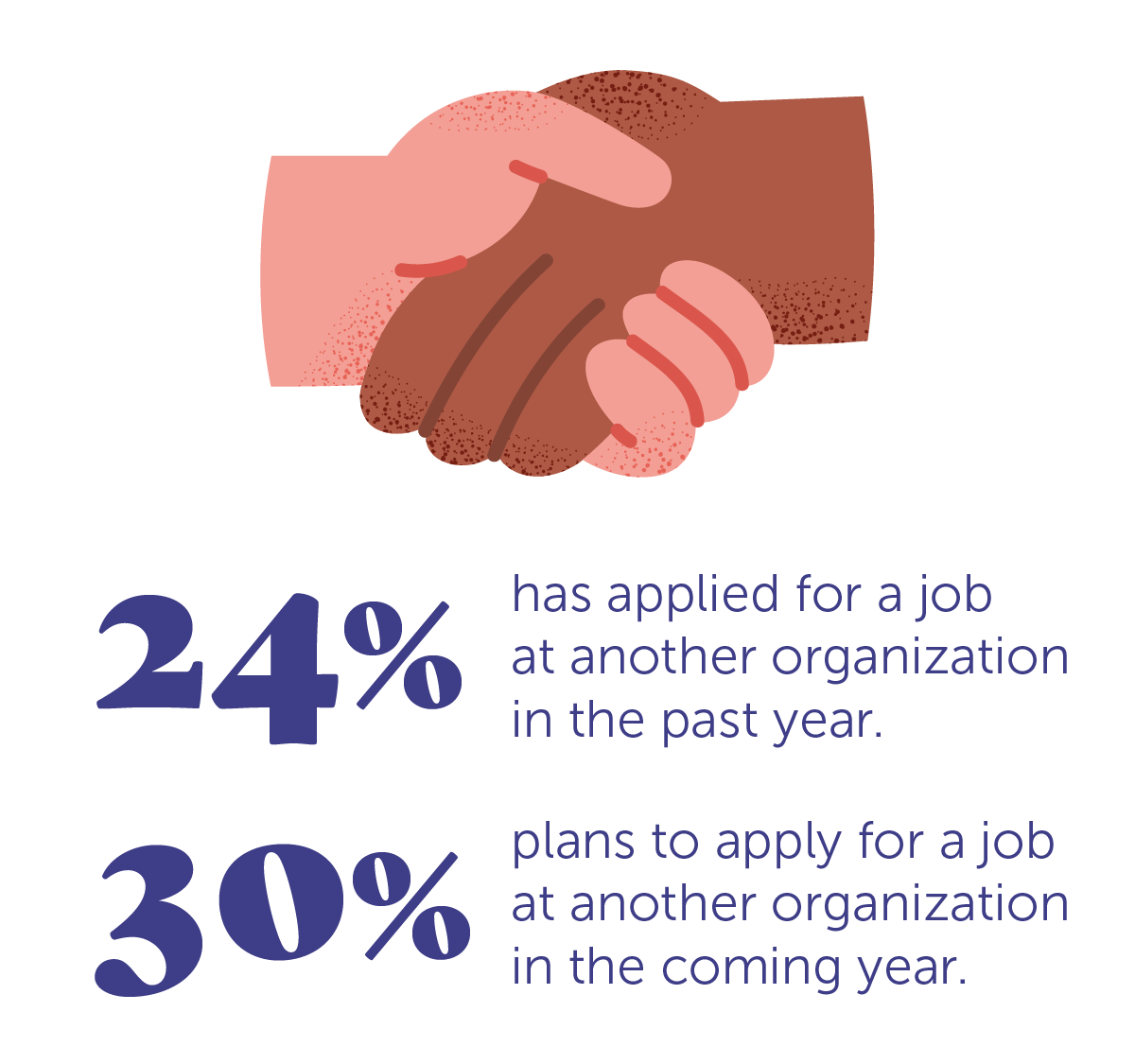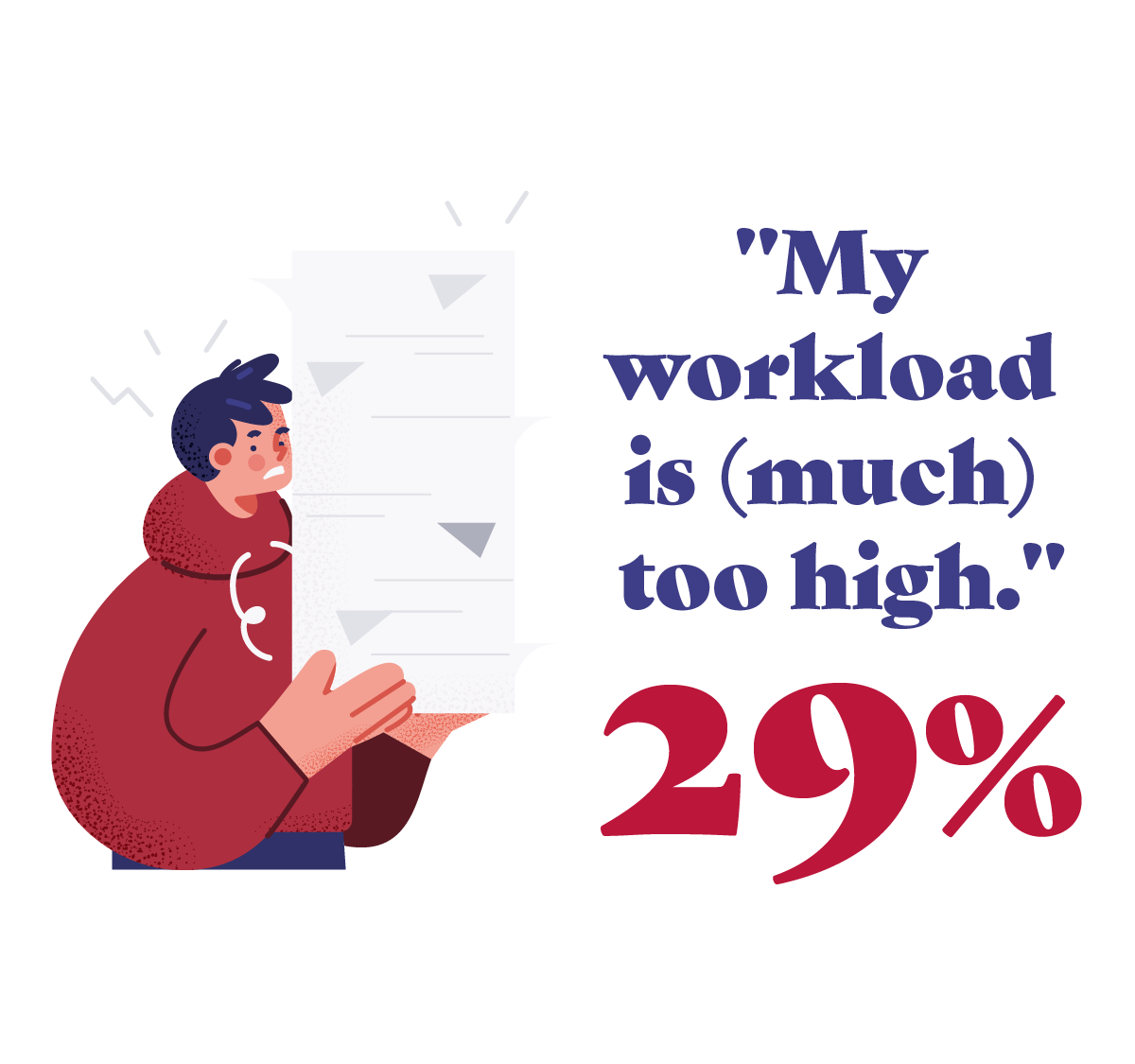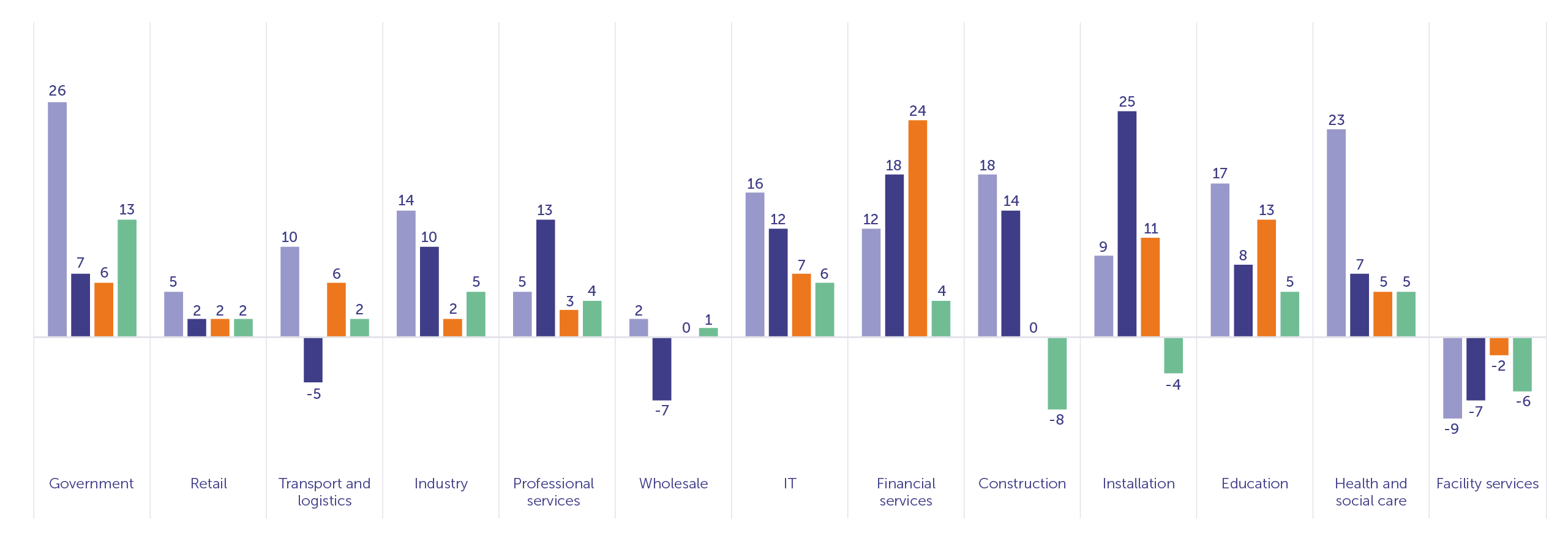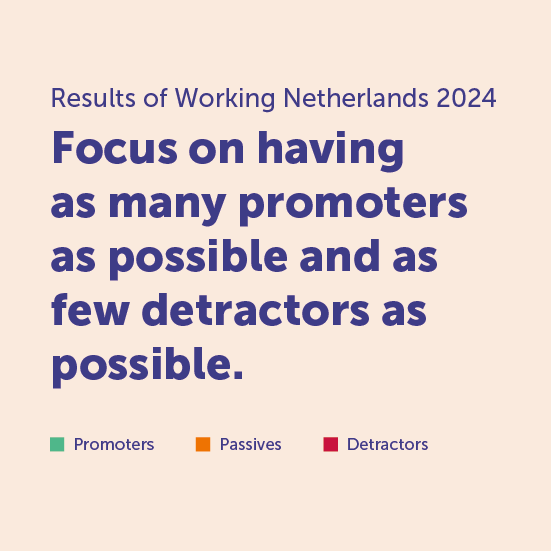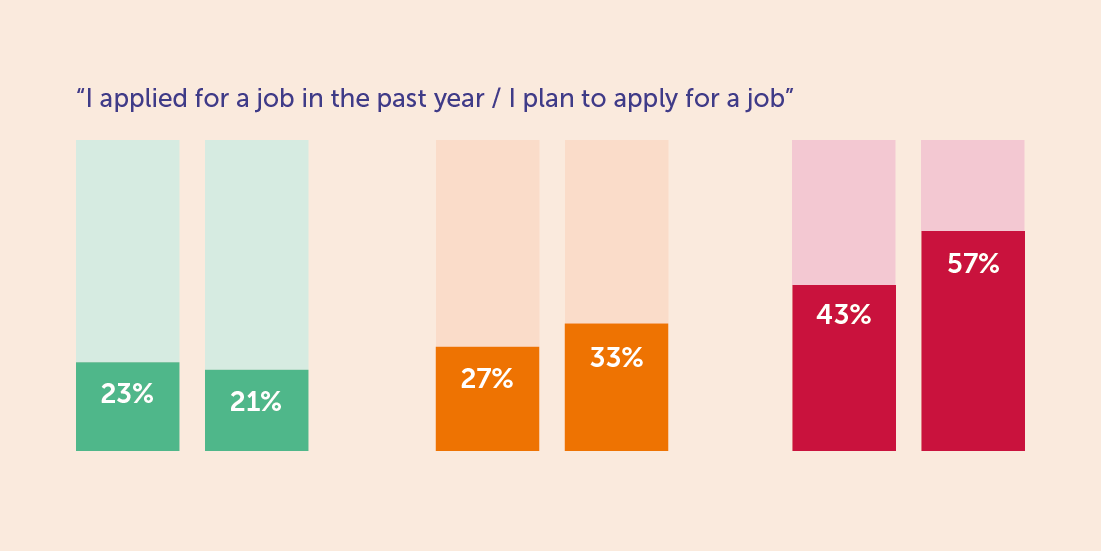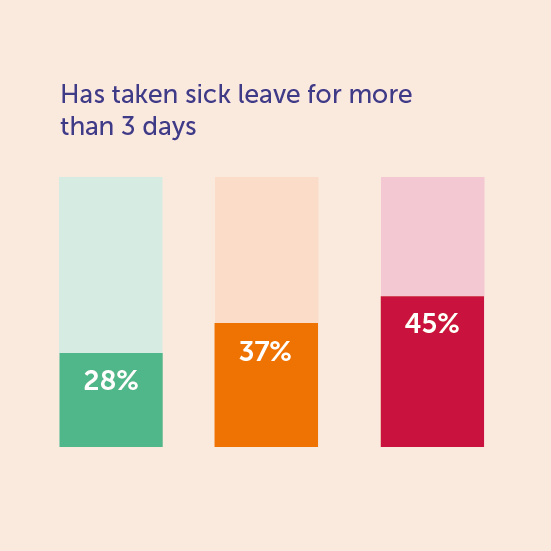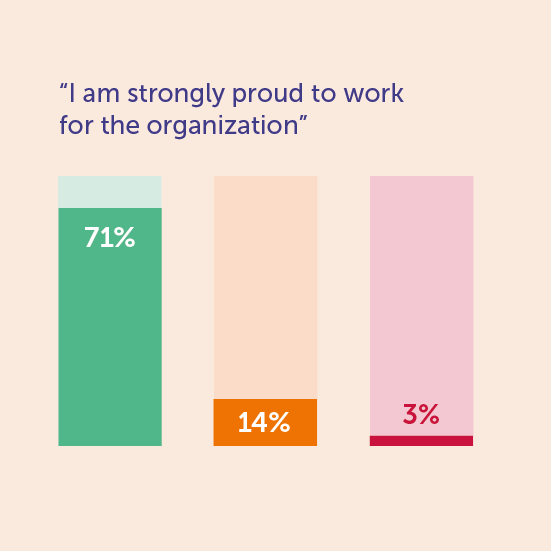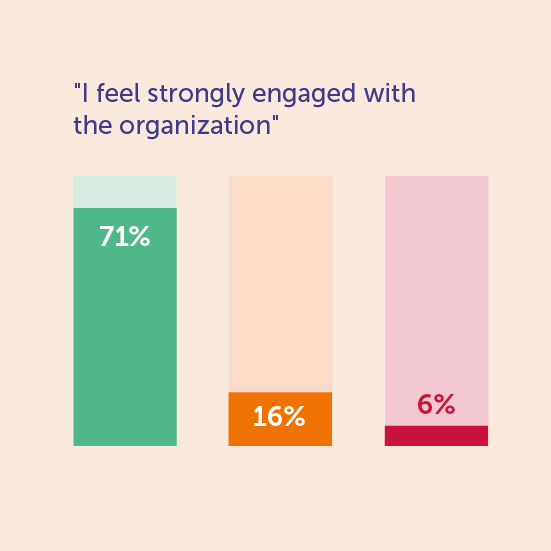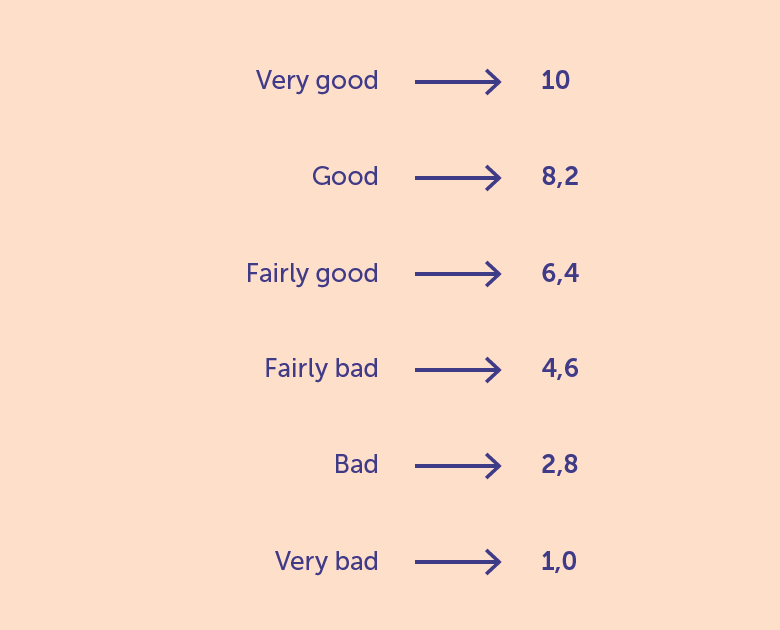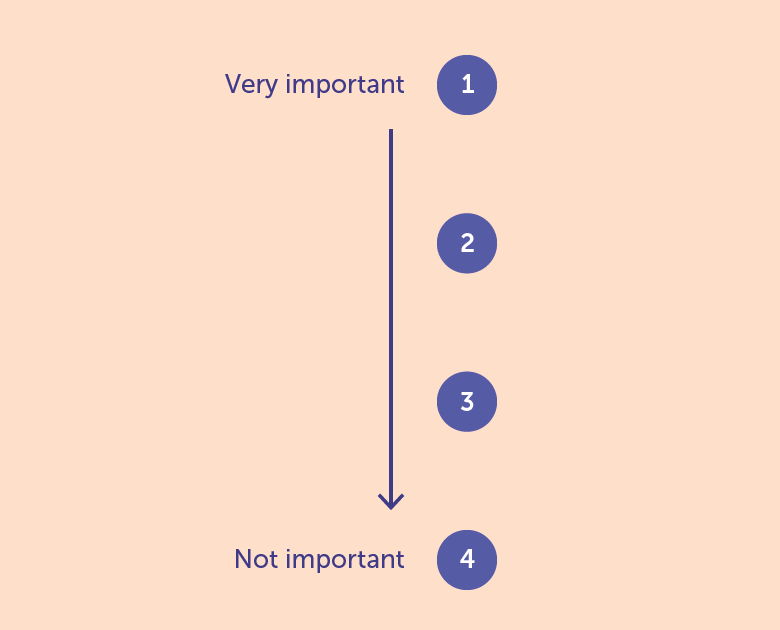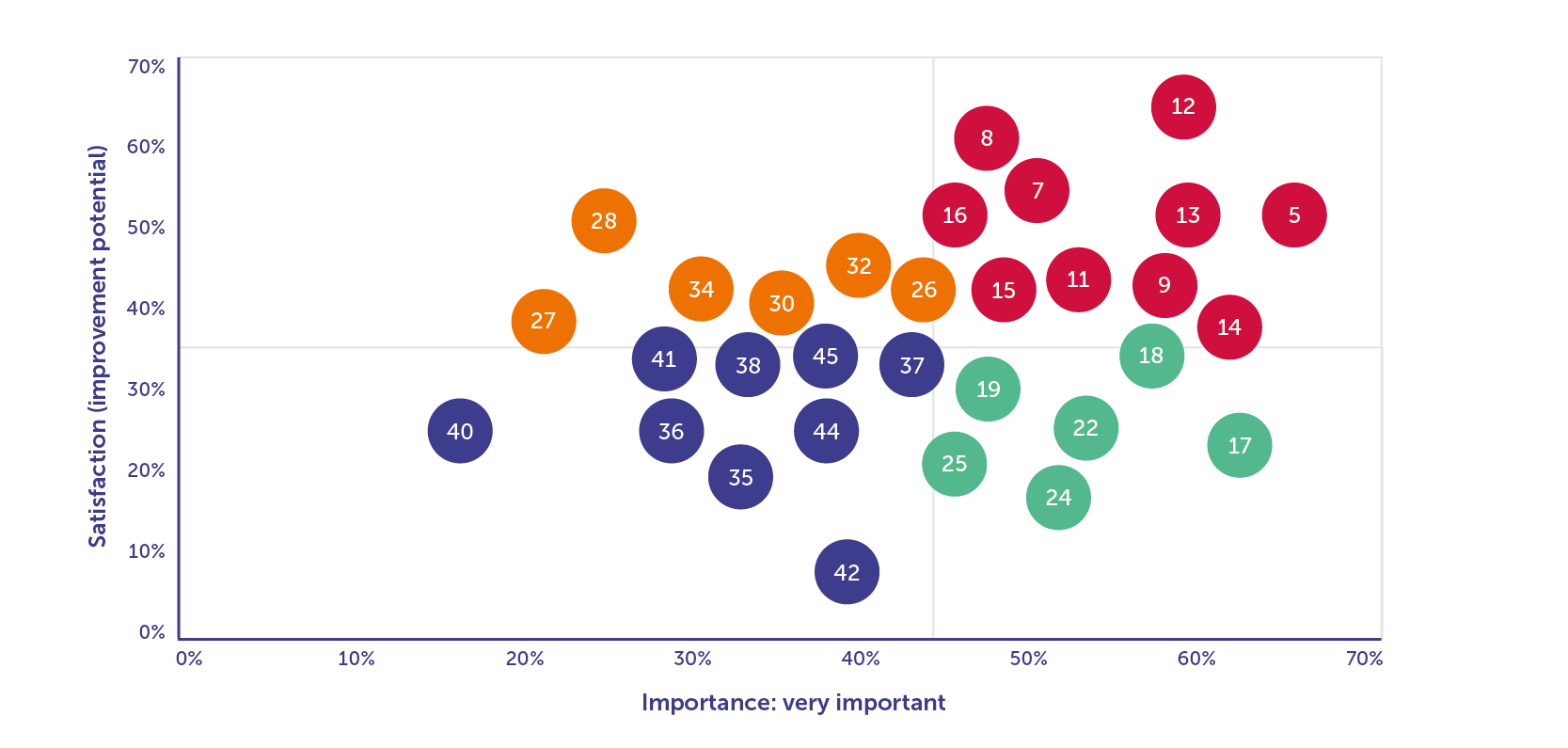Learn more about resilience?Then read on here!
Employee Experience
Sit Less, Move More
We all know that exercise is important for our health. Yet, many people still don’t move enough. In fact, the WHO officially declared physical inactivity a global pandemic in 2012. Prolonged sitting poses various health risks, including type 2 diabetes and obesity.
The recommendation is to interrupt sitting every half hour. Even a brief 5-minute break can make a significant difference. Here are three tips to help you incorporate more movement into your work routine:
1. Stand During Meetings
If you have a meeting that lasts longer than half an hour, try standing occasionally. This might feel awkward at first, so discuss it with your colleagues and agree that it’s acceptable. An added benefit: standing up and moving around can boost your creativity!
2. Rethink Coffee and Drink Runs
If you’re used to getting coffee or drinks for each other, consider changing this habit. Instead of fetching drinks for everyone, walk by yourself or with a colleague. Discuss this change with your team and emphasize that it’s not about being selfish but about helping each other reduce sitting time.
3. Evaluate Video Calls
Before starting a video call, ask yourself if it’s truly necessary. For many short calls, a phone call while walking can be just as effective. This way, you can stay active and still communicate effectively.
Additional Tips
- Take the Stairs: Opt for stairs instead of elevators whenever possible.
- Bike or Walk to Work: If feasible, consider biking or walking instead of driving.
- Go for Walks During Breaks: Use break times to take a short walk.
- Park Further Away: Choose a parking spot that requires a bit more walking.
- Use a Standing Desk: Incorporate standing periods into your workday with a standing desk.
These small changes can make a big difference in your overall activity level. Consider using a pedometer to track your movement patterns and stay aware of your activity.
Good Night!
Sleep is a magical time when our body and brain recover from the demands of the day. It’s when we renew cells, repair muscles, and consolidate memories. Without sufficient sleep, we can become irritable, stressed, and exhausted. Our problem-solving, learning, and concentration abilities decline, and let’s face it, no one enjoys dealing with a cranky coworker!
Here are some tips for a good night’s sleep:
1. Establish a Sleep Routine
Train your body to relax by going to bed and waking up at the same time every day. This helps regulate your internal clock and makes it easier to fall asleep.
2. Avoid Screen Time Before Bed
The blue light emitted by phones and laptops can interfere with melatonin, the sleep hormone. Put down your devices and give your brain time to unwind before heading to bed.
3. Moderate Caffeine and Alcohol Intake
Excessive caffeine and alcohol can disrupt your sleep. Try to limit your intake, especially in the evening, to avoid interrupting your rest.
4. Exercise Regularly
Regular exercise can improve your sleep quality. However, avoid working out too close to bedtime, as it might energize you and make it harder to fall asleep.
5. Write Down Your Worries
If your mind is racing with thoughts, write them down before bed. This can help you release concerns and relax more easily.
Don’t Feel Like It? Make It Make Sense!
We’ve all been there: you decide to change something about your lifestyle, such as eating healthier or exercising more. Initially, things are going well. However, over time, your motivation wanes, and you find yourself slipping back into old habits. What can you do about it?
First, recognize that motivation is often overrated. While it’s great to have, you can still succeed without it. How? By building a habit!
Your brain loves habits. It prefers routine and minimal mental effort, so once something becomes a habit, you don’t need motivation to do it—you just do it. Think about brushing your teeth. You probably do it every morning and evening without considering whether you’re motivated. It’s just a habit.
Here are 10 tips to help you successfully build a new habit:
1. Choose an Achievable Habit
Start with a small, realistic habit that you can easily incorporate into your daily routine. Successfully maintaining a small habit can motivate you to tackle larger goals.
2. Set a Clear Goal
Formulate a specific and measurable goal for your habit. Clear goals help you stay focused and track your progress effectively.
3. Make a Plan
Plan how to integrate the habit into your daily life. Decide when, where, and how you will perform the habit.
4. Link to an Existing Habit
Attach your new habit to an existing one. This makes it easier to incorporate into your routine. For example, if you want to stretch every morning, do it right after brushing your teeth.
5. Use Reminders
Set reminders on your phone or place notes in strategic spots to prompt you to perform your habit.
6. Start Small
Begin with a small amount of time or effort and gradually increase it. This approach helps avoid feeling overwhelmed and improves your chances of success.
7. Keep Track of Your Progress
Use a journal, app, or simple checklist to monitor your progress. Seeing your progress visually can motivate you to keep going.
8. Reward Yourself
Plan small rewards for successfully sticking to your habit. Rewards reinforce positive behavior and make the process more enjoyable.
9. Involve Others
Share your habit goals with others and seek their support and encouragement. A support system can help you stay motivated and accountable.
10. Be Patient and Gentle with Yourself
Building a habit takes time and effort. Don’t expect perfection. If you slip up, be kind to yourself, learn from it, and keep going. Consistency is key.
Remember, establishing a habit requires time and perseverance. Stay focused, be determined, and don’t give up. Your efforts will eventually pay off, and the habit will become a natural part of your daily routine.
Good luck!
Make Mistakes
In life, we are often encouraged to chase success and avoid mistakes. This is a significant oversight. In reality, making mistakes is a crucial ingredient for personal growth and success!
Firstly, making mistakes is a natural part of being human; everyone makes them. But here’s the secret: mistakes are not the end of the world; they are just the beginning. Every mistake presents a valuable opportunity to learn, grow, and come back stronger.
Allowing ourselves to make mistakes helps us discover our limits and identify areas for improvement. We learn about our weaknesses and, more importantly, uncover our strengths. This process fosters courage and resilience in the face of challenges.
Mistakes also pave the way for creativity and innovation. Some of the greatest inventions and breakthroughs have resulted from what were initially seen as mistakes. As Thomas Edison famously said, “I haven’t had failures. I just found 10,000 ways that didn’t work.” Each so-called “mistake” was a step closer to his ultimate success.
Embracing mistakes encourages us to step out of our comfort zones and take risks. Fear of making mistakes often keeps us in a safe but limited space. When we take risks, however, we open ourselves up to unexpected opportunities and growth that we might not have discovered otherwise.
It’s time to break the stigma around making mistakes and view them as valuable tools for progress. Don’t fear making mistakes; fear standing still. Learn, grow, and explore your potential. You’ll be amazed at what you can achieve when you embrace the power of making mistakes. Remember, making mistakes is not the end; it is the beginning of something wonderful.
Meaning in Life
A life lacking meaning can lead to feelings of emptiness and purposelessness, which in turn can result in stress, depression, and diminished resilience. Meaningfulness provides us with a guiding compass, an inner fire that drives us forward and offers fulfillment. So, how can you experience more meaning in your life?
1. Discover Your Passions and Values
Reflect on what truly matters to you. What are your passions, and what do you believe in? Identifying these can help you align your actions with your core values.
2. Find Meaning in Your Work
Connect your work to a higher purpose. Understand how your contributions positively impact others and how they contribute to a larger goal. This perspective can infuse your work with a sense of meaning.
3. Give Back to Others
Helping others can provide a profound sense of purpose. By making a positive impact on the lives of those around you, you become more aware of your influence on the world.
4. Look for Learning Moments
View challenges as opportunities for growth. Even in difficult situations, seek out the lessons that can enrich and strengthen you. Embracing these lessons can enhance your sense of purpose.
5. Create Meaningful Relationships
Connect with others on a deeper level. Build and nurture relationships that support and inspire you. Meaningful connections can provide emotional support and enrich your life.
6. Live in the Moment
Be present and aware of your surroundings. Take time to enjoy the small things and appreciate the beauty in everyday life. Living in the moment can enhance your overall sense of meaning.
7. Strive for a Healthy Balance
Maintain a balance between work, rest, and relaxation. Allocating time for yourself is crucial for experiencing and maintaining a sense of meaning.
Ask Yourself the Right Questions
Discovering your passion might sometimes seem abstract, but it’s crucial for experiencing more meaning in life and increasing resilience. To uncover what truly excites you, start by asking yourself some insightful questions:
1. What Touches My Heart?
Reflect on the activities, topics, or issues that evoke a strong emotional response. What makes you feel happy, angry, sad, or excited? These emotional triggers can point you toward your passions.
2. Where Do I Lose Track of Time?
Identify activities that completely absorb you, making you lose track of time while you’re engaged in them. These pursuits might be clues to your true passion.
3. What Inspires Me?
Consider the people, books, movies, artwork, or accomplishments that inspire you. What do you admire and why? Understanding what inspires you can reveal your passions.
4. What Are My Natural Talents?
Recognize the skills and talents that come naturally to you. Often, we are drawn to activities we excel in, so your talents can help identify your passion.
5. What Are My Values?
Think about the principles and values that are important to you. Your passion may be closely tied to what you consider fundamental and meaningful.
6. What Am I Dreaming About?
Imagine what you would do if all constraints were removed. What dreams do you cherish? Exploring these aspirations can help clarify your passions.
7. What Makes Me Feel Energized?
Pay attention to the activities that energize you rather than drain you. Your passion is likely something that excites and motivates you.
8. What Would I Do If Money Didn’t Matter?
Consider how you would spend your time if financial concerns were irrelevant. What activities or pursuits would you choose? This can provide insight into your true interests.
9. What Are My Favorite Childhood Memories?
Look back on your childhood and recall the activities you enjoyed. These memories can offer clues to your passions and interests.
10. What Am I Curious About?
Explore the topics or areas that spark your curiosity and make you want to learn more. Curiosity can often lead to discovering your passion.
Remember, discovering your passion is a process that takes time and self-reflection. Allow yourself the space to explore and experiment. Be open to new experiences and continue to ask yourself these questions.
Want to learn more? Read these articles
Talking about mental health at work: https://openup.nl/blog/praten-mentale-gezondheid-werk/
Exercise and work stress: https://boommanagement.nl/artikel/werkgever-moet-bewegen-faciliteren-om-werkstress-te-verminderen/
How do I learn to handle criticism better? https://psycholoog.nl/blog/hoe-leer-ik-beter-met-kritiek-om-te-gaan/
Tips for optimal sleep: https://openup.nl/blog/slaap-lekker-5-tips-voor-een-optimale-nachtrust/
Vitality in the workplace: https://boommanagement.nl/artikel/vitaliteit-op-de-werkvloer-meer-dan-fruit-in-de-kantine-of-een-sportabonnement/
The mental health taboo in the workplace: https://www.trendsinhr.nl/het-mental-health-taboe-op-de-werkvloer/
Practical tips to relieve stress: https://openup.nl/blog/stressverlichting-onderweg/
Develop your growth mindset: https://openup.nl/blog/growth-mindset/
Having fun at work and performing well: https://openup.nl/blog/plezier-op-werk-en-goed-presteren-hoe-combineer-je-die-twee-4-tips/
Investing in mentally healthy employees equals
Or read these books
The Ladder – Ben Tiggelaar Changing behavior using a very simple model.
Socrates on Sneakers -Elke Wiss The art of asking good questions.
Tiny Habits – BJ Fogg A simple way to create new habits.
Never Too Busy Again – Tony Crabbe A tidy head in a crowded world Happy Life 365 – Kelly Weekers The no-nonsense mindset for a more enjoyable life.
The Power of Choice – Kelly Weekers The questions I ask myself to keep choosing what makes me happy You’re already enough – Thijs Launspach Mentally healthy in a crazy world Feet in the socket – Gwen van Poorten #metznallen tastier life The courage of imperfection – Brene Brown Let go of who you think you have to be
Project Healthy – Natalia Rakhorst Losing weight with healthy and especially delicious food How To Stop Worrying And Start Living – Dale Carnegie About Fun In
Life Born to Be Good – Dacher Keltner The Science of a Meaningful Life The Subtle Art of Not Giving a F*ck – Mark Manson A Counterintuitive Approach to Living a
Good Life Mindgym, gym for your mind – Wouter de Jong In 12 weeks more focus, peace and energy Master Your Mindset – Michael Pilarczyk Live your most beautiful life
Or listen to these podcasts
DRIVE Podcast – Mark Tuitert https://marktuitert.nl/podcasts/
About Routines – Arie Boomsma https://podcastluisteren.nl/pod/Over-Routines
The Ben Tiggelaar Podcast – Ben Tiggelaar https://www.bnr.nl/podcast/ben-tiggelaar-podcast
How do I live to be a happy and healthy 100? – Milou Turpijn https://open.spotify.com/episode/6zGDAPQtI2I6mUT4kuZuSk?si=-gOgUzZZRyWNiaGxIqynvQ&nd=1
OERsterk Podcast – Drs Richard de Leth https://podcastluisteren.nl/pod/OERsterk-Podcast-met-drs-Richard-de-Leth
How are you like this? – Thijs Launspach https://dagennacht.nl/serie/hoe-ben-je-zo/
#METZNALLENdepodcast – Gwen van Poorten https://metznallen.nl/podcast/
The Podcast Psychologist https://podcastluisteren.nl/pod/De-Podcast-Psycholoog


